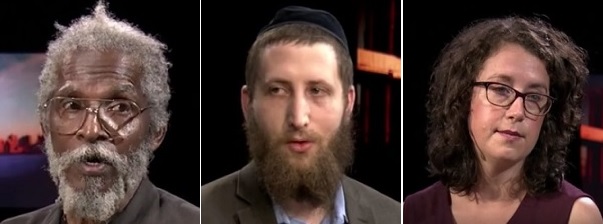
BRIC
From left to right, Richard Greene, founder and CEO of the Crown Heights Youth Collective, Rabbi Mordechai Lightstone, a resident active in the area's Jewish community, and Maura Ewing, a freelance journalist.
A little after 8 p.m. on the evening of August 19, 1991, a motorcade carrying the leader of the Chabad-Lubavitch movement passed through the intersection of President Street and Utica Avenue in Crown Heights, one car lagging behind. Within hours, a young boy had been killed by that car, a Jewish student had been attacked by an angry mob and murdered, and a prolonged spasm of violence had taken hold of a divided neighborhood.
What’s often forgotten in the histories of the Crown Heights riots is that efforts to promote better relations between blacks and Jews were underway well before the unrest. Those continued after the violence ebbed and the cameras moved away. And the area evolved in other ways as well. It is now considered an epicenter for gentrification and displacement.
As the anniversary approaches, BRIC-TVs BKLive hosted Richard Greene, founder and CEO of the Crown Heights Youth Collective; Rabbi Mordechai Lightstone, a resident active in the area’s Jewish community; and Maura Ewing, a freelance journalist who co-authored the most comprehensive look yet at the origins and impact of gentrification in Crown Heights.








2 thoughts on “Video: Crown Heights, 25 Years Later”
The Crown Heights riots were a Dinkins sanctioned pogrom against the Jewish community.
Pograms are STATE SANCTIONED AND STATE SUPPORTED! The police and the driver who killed Gavin Cato and kept going CREATED that Event!